
Haworthia is a large genus of small succulent plants endemic to Southern Africa (Mozambique, Namibia, Lesotho, Eswatini and South Africa).

Gasteria is a genus of succulent plants, native to South Africa.

Eriospermum is a genus of tuberous flowering plants. It contains about 80-100 species, native to sub-Saharan Africa.

Eurybia is a genus of plants in the composite family that were previously included in the genus Aster. Most species are native to North America, although one is also present in northern Eurasia. There are 23 species in the genus, including 1 natural hybrid. The name was first applied by Alexandre de Cassini in 1820. The name is derived from Ancient Greek εὐρύς (eurús), meaning "wide", and βαιός (baiós), meaning "few", perhaps in reference to the small number of relatively wide ray florets.

Astroloba corrugata is a small succulent plant of the Astroloba genus, endemic to the Little Karoo and the far south of the Western Cape, South Africa.
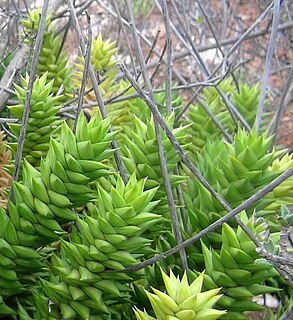
Astroloba spiralis is a small succulent plant of the Astroloba genus, endemic to the southern Karoo regions of the Western and Eastern Cape Provinces, South Africa.
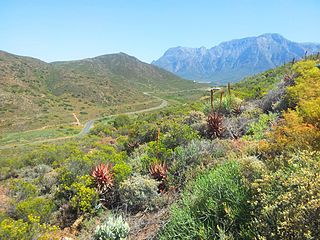
Robertson Karoo is a semi-arid vegetation type, restricted to sections of the Breede River Valley, Western Cape Province, South Africa. It is a subtype of Succulent Karoo and is characterised by the dominance of succulent plant species, and by several endemic plants and animals.
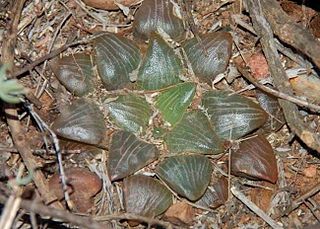
Haworthia bayeri is a species of the genus Haworthia in the family Asphodelaceae, endemic to the southern Cape Provinces in South Africa.
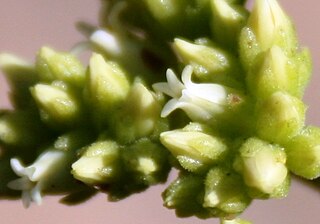
Crassula atropurpurea is a succulent plant, very common and widespread in the southern Karoo regions of South Africa and Namibia.

Duvalia elegans is a small succulent plant species, in the family Apocynaceae. It is the type species of the genus Duvalia, and it is endemic to the Western Cape Province, South Africa.

Duvalia vestita is a small succulent plant species, in the family Apocynaceae, indigenous to the southernmost part of the Western Cape Province, South Africa.

Euphorbia tuberosa, commonly known as '"milkball/melkbol"' or '"wilderamenas"', is a variable geophytic plant of the family Euphorbiaceae, indigenous to the western parts of South Africa.
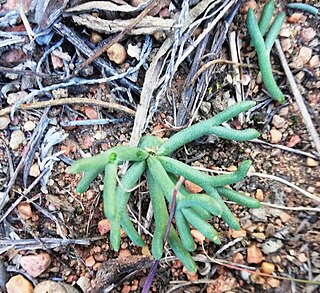
Eriospermum bowieanum is a species of geophytic plant of the genus Eriospermum, endemic to the Robertson Karoo region of the Western Cape Province, South Africa.
Eriospermum breviscapum is a species of geophytic plant of the genus Eriospermum, indigenous to South Africa.
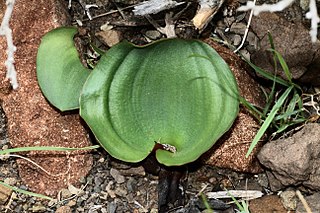
Eriospermum capense is a species of geophytic plant of the genus Eriospermum, indigenous to the Western Cape Province, South Africa.
Eriospermum graminifolium is a species of geophytic plant of the genus Eriospermum, indigenous to South Africa.
Eriospermum lanceifolium is a species of geophytic plant of the genus Eriospermum.
Eriospermum exile is a species of geophytic plant of the genus Eriospermum, indigenous to South Africa.

Drosanthemum lavisii is a succulent plant in the ice plant family, Aizoaceae, indigenous to the Overberg region of the Western Cape Province, South Africa.
Senecio sarcoides is a species of succulent flowering plant in the aster family, indigenous to the Western Cape and Northern Cape, South Africa.














